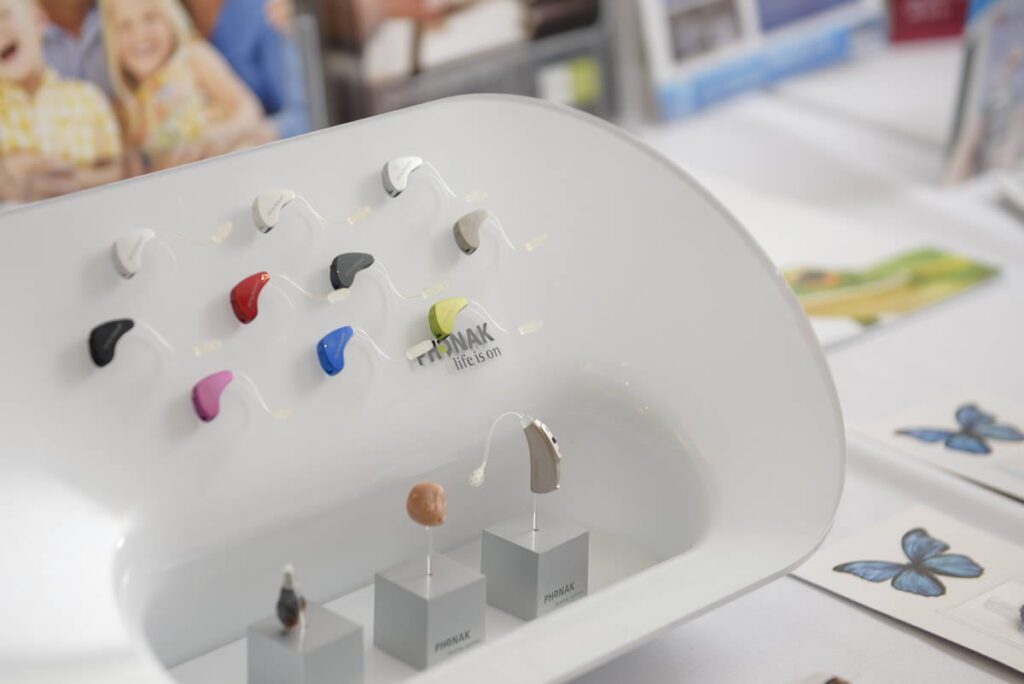Wondering how long hearing aids last and how often you have to replace a hearing aid? Generally, you can expect your hearing aids to last around five years, although with proper care, you could get up to six years or more from them before you need to buy new ones. And by then, even better and more sophisticated models may have come out, allowing you to hear the world like never before.
Hearing aids are a lifesaver for many people, giving them the ability to hear like they used to and allowing them to take part in life instead of hiding away because they couldn’t make out conversations and other sounds. These tiny technological marvels have come a long way in recent times and are no longer the clunky pieces of plastic that everyone could see and didn’t work all that well.
Today’s hearing aids are complex devices that can deliver crystal-clear sound to the ears and you’d hardly even know they were there — both you and the people around you. They’ve become so advanced that they do so much more than help you hear again, as you can use them to control the volume on your TV, stream music from your phone directly to them and lots more. Some newer hearing aids even have artificial intelligence features built-in, and many now come with apps that you can use to get help and automatically update your software.
All this is great for hearing aid users, as long as the indispensable devices last and don’t give out after a short time. How often do you have to replace a hearing aid? You need to look after them to ensure you get many years of use from your hearing aids, especially as the top-of-the-line models can be expensive. In this post, we’re going to take a deeper look into the wonderful world of hearing aids and examine how long they typically last.
How Do Hearing Aids Work?
Although there are different types of hearing aids, they essentially do the same thing and are built around three fundamental components: a microphone to pick up sounds around you; an amplifier, which boosts the incoming sounds; and a speaker, or receiver, to deliver the louder sounds into your inner ear, from where the waves travel into the parts responsible for hearing.
Modern hearing aids are digital, which means they have a computer chip built into them. State-of-the-art hearing aids have powerful and sophisticated computer chips on board that can do all sorts of things, but they’re basically designed to convert sounds the microphone picks up into digital code. This gives users the advantage of being able to set or adjust their hearing aids to their specific needs using an app on their smartphone. So hearing aids have now become highly customisable instead of just delivering the same level of sound all the time.
Hearing aids also have another essential element: the battery to keep them going. It can be a special battery designed for hearing aids or a rechargeable one that you typically charge at night, as you don’t need your hearing aids while sleeping. That’s because they can fall out while you sleep and if you did wear them to bed, the microphones would be covered by the pillow anyway. If you’re worried about not hearing your alarm go off, perhaps set it to a louder volume.
Hearing Aids: A Style to Match Your Requirements
Most people who use hearing aids don’t want people to know that that’s what they are. This has driven manufacturers to design and make newer hearing aid styles that are more discreet and, if seen at all, resemble the earbuds that are popular for listening to music. So there are lots of models to choose from, and in consultation with your audiologist, you can select the kind of hearing aid that looks good and also delivers the sound amplification you need.
These are the most common types of hearing aids in use today:
- Completely in the Canal
This is the smallest hearing aid you can expect to get because, as the name suggests, it fits inside the ear canal and is moulded by audiologists to be a perfect fit.
Pros: It’s not really visible and doesn’t pick up wind, which can be bothersome.
Cons: The battery is much smaller than other types and doesn’t last as long; earwax can cover the speaker, meaning you get muffled sounds.
SUITABLE FOR: Mild to moderate hearing loss.
- In the Canal
Part of this hearing aid is placed in the canal, and part of it remains outside.
Pros: Even though it’s not entirely in the ear canal, this kind of hearing aid is still not all that visible. It’s larger than completely in the canal types, which means it’s packed with more features.
Cons: It can be hard to adjust, and the speaker can become clogged with earwax.
SUITABLE FOR: Mild to moderate hearing loss.
- Behind the Ear
The hearing aid is placed behind the ear, with amplified sound delivered into the ear canal via a tube that has a speaker, or earpiece, at the end.
Pros: They can pick up sound from desired directions, such as in front of the person, due to directional microphones, and amplification is generally better.
Cons: It’s quite large — the traditional type you may have seen older people wearing. As it’s outside the ear, the microphone may pick up distorting wind noise.
SUITABLE FOR: All levels of hearing loss.
- In the Ear
These are positioned in the outer part of the ear, with the shell customised to the shape of the ear so you get a perfect fit.
Pros: Can easily use features such as volume control and is powered by a larger battery compared to other types, so you get longer life.
Cons: As the speaker is inside the ear canal, it can become covered in earwax; it’s also a larger, and therefore a more visible type of hearing aid.
SUITABLE FOR: Mild to severe hearing loss.
- Receiver in Canal
This type also sits behind the ear and has a tube running into the ear canal and a speaker at the end.
Pros: It’s not as visible as a behind the ear hearing aid and features directional microphones.
Cons: Earwax may clog up the speaker, giving you muffled sounds.
SUITABLE FOR: All levels of hearing loss.
- Open Fit
The open fit is another style of behind the ear hearing aid but one with an open dome in the canal that allows natural noise to get through.
Pros: Low sounds are not blocked or prevented from entering the ear while high-frequency sounds are amplified, giving the wearer a desirable level of hearing.
Cons: May be visible and the open dome part can be hard to place in the ear as it’s usually not custom-made.
SUITABLE FOR: Mild to moderate hearing loss.
So How Often Do You Have to Replace a Hearing Aid?
Like all sensitive and delicate electronic devices, the length of time hearing aids last depends on how well you look after them — and they work incredibly hard, boosting your hearing all and every day. Some things you can do to look after your hearing aids and prolong their life include:
- Keeping them away from moisture and heat, as neither is good for electronics.
- Cleaning them according to the manufacturer’s instructions, or regularly take them to your audiologist to have it professionally done.
- Being careful when using hair products near your hearing aids, as hair spray, gels and foams can cause damage to them.
- Replacing the batteries as soon as they die out.
- Turning off your hearing aids when you’re not using them.
If you would like to know more about hearing aids and perhaps be custom-fitted for ones to improve your hearing, you can book a consultation with one of our hearing specialists today.








